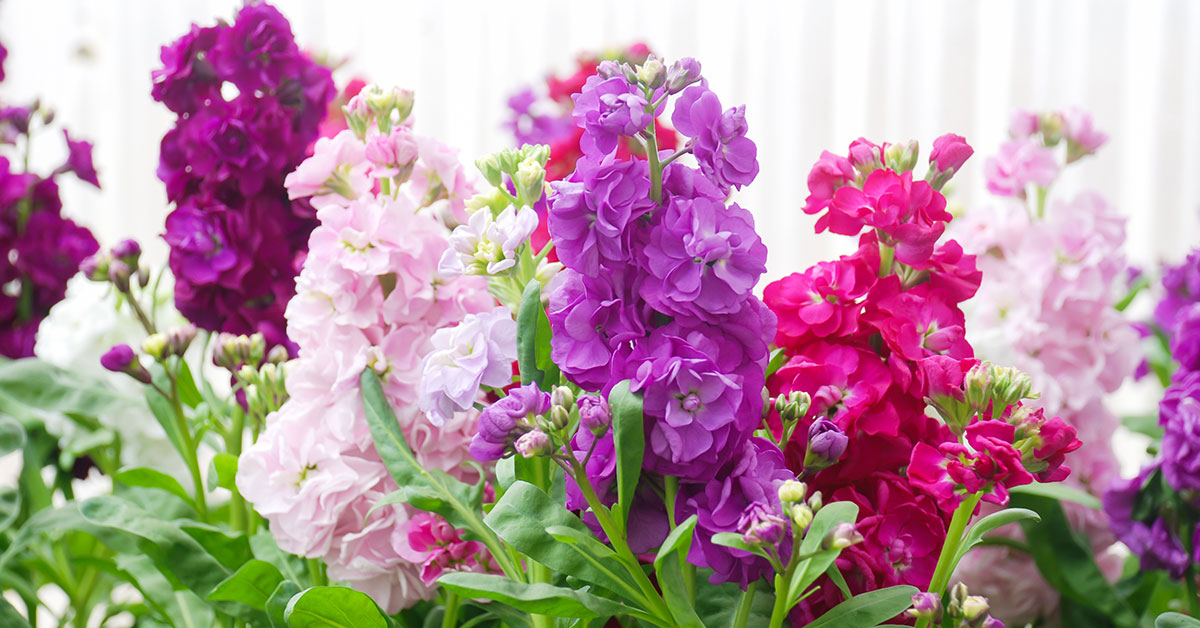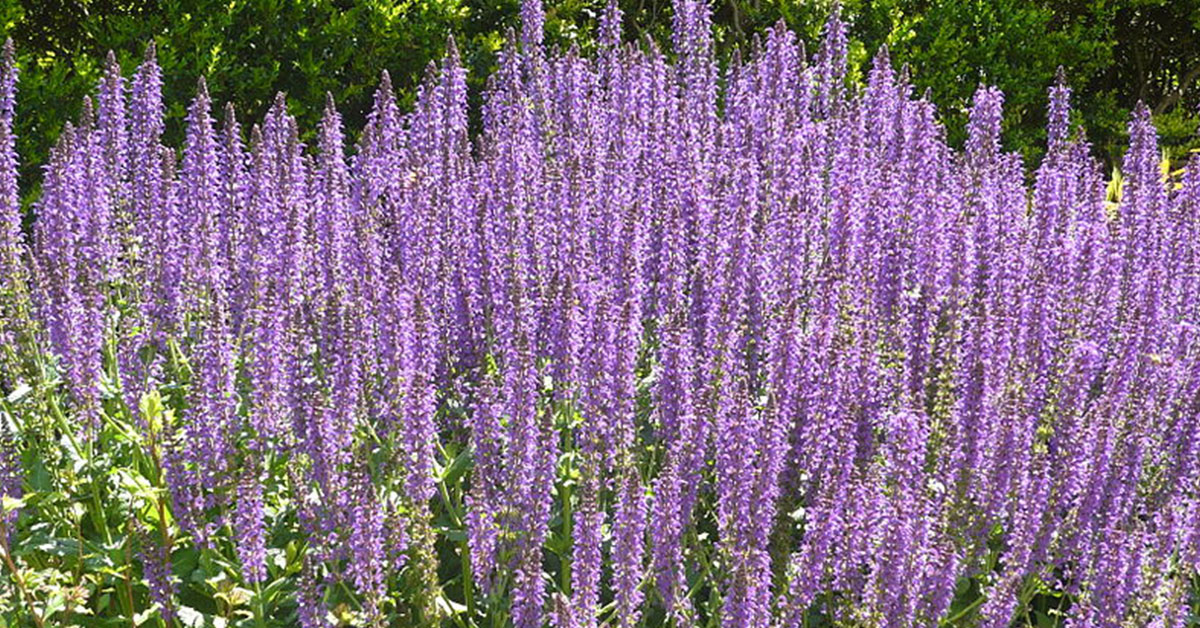When should you deadhead stock flowers and how do you do it? In this guide, we’ll go over the art of deadheading these flowers.
Stock flowers, scientifically known as Matthiola incana, are beloved for their vibrant colors, intoxicating fragrance, and ability to attract pollinators. Deadheading, the process of removing spent flowers, is essential to maintain the health and beauty of these stunning blooms.
By removing faded blooms, you not only encourage the plant to produce more flowers but also prevent the formation of seeds, allowing the plant to redirect its energy towards growth and vitality.
In this article, we will delve into the benefits of deadheading stock flowers, explore the various methods to do so effectively, and provide you with expert tips to ensure your stock flowers thrive and continue to grace your garden with their enchanting presence. So, let’s dive in and learn how to master the art of deadheading stock flowers!
Should you deadhead stock flowers?
Stock flowers, also known as Matthiola incana, are beautiful and fragrant plants that are commonly grown in gardens for their colorful blooms. Deadheading is the process of removing spent flowers from a plant, and it can have several benefits for the overall health and appearance of the plant. In the case of stock flowers, deadheading is generally recommended. Here’s why:
- Prolonged blooming: Deadheading encourages the plant to produce more flowers. By removing the faded blooms, you prevent the plant from diverting energy into seed production. This redirects the plant’s resources towards producing new flower buds, resulting in a longer blooming period and more abundant blooms.
- Neat and tidy appearance: Removing spent flowers keeps the plant looking tidy and well-maintained. Stock flowers have tall, upright stems with multiple flower spikes, and deadheading prevents the plant from having unsightly brown or withered flowers, which can detract from its overall beauty.
- Preventing self-seeding: If you allow stock flowers to go to seed, they may self-seed and spread throughout your garden. While this can be desirable in some cases, it can also lead to overcrowding and competition for resources among the plants. Deadheading prevents the formation and dispersal of seeds, helping to maintain control over the plant’s growth and preventing it from becoming invasive.
Here’s how to deadhead stock flowers effectively:
- Wait until the flowers have faded and started to wither. This is usually indicated by a change in color or the petals becoming dry and papery.
- Locate the base of the flower spike, where it connects to the main stem. This is where you will make your cut.
- Using clean and sharp pruning shears or scissors, cut the flower spike just above a set of healthy leaves or a lateral bud. Make the cut at a slight angle to prevent water from pooling on the stem.
- Dispose of the removed flowers properly, either by composting or discarding them in the green waste bin.
- Continue to monitor the plant and repeat the deadheading process as new flowers fade.
It’s worth noting that some gardeners may choose to leave a few spent flowers on the plant to allow for self-seeding or to provide food for pollinators. If you decide to do this, it’s important to strike a balance between allowing some flowers to go to seed and deadheading the majority to promote prolonged blooming. In summary, deadheading stock flowers is generally recommended to encourage prolonged blooming, maintain a neat appearance, and prevent self-seeding. By following the proper deadheading techniques, you can enjoy a more vibrant and beautiful display of stock flowers in your garden.
When to deadhead stock flowers?
The best timing to deadhead stock flowers is when the majority of the blooms have faded and started to wilt. Deadheading is the process of removing spent flowers from the plant, which encourages new growth and prolongs the blooming period. For stock flowers, it is generally recommended to deadhead regularly throughout the blooming season.
Here are some guidelines to help you determine the best timing for deadheading stock flowers:
- Regular deadheading: Check your stock flowers regularly and remove any flowers that have faded or wilted. This prevents the plant from putting energy into producing seeds and redirects it towards producing new blooms.
- Fading blooms: As the flowers on the stock plant start to fade and lose their vibrant color, it is a good indication that they are ready to be deadheaded. Look for petals that are browning or shriveling.
- Timing: Deadhead stock flowers as soon as you notice the fading blooms. This will prevent the plant from wasting energy on producing seeds and encourage it to produce more flowers.
- Cut above a leaf node: When deadheading, make sure to cut the stem just above a leaf node. A leaf node is the point where a leaf is attached to the stem. This encourages new growth and branching from that point.
- Remove the entire flower head: When deadheading stock flowers, it is best to remove the entire flower head, including the stem. This ensures a clean cut and prevents any potential disease or pests from lingering on the plant.
By regularly deadheading your stock flowers, you can enjoy a longer blooming period and encourage the plant to produce more flowers. Additionally, removing spent blooms improves the overall appearance of the plant and keeps it looking tidy.
How to deadhead stock flowers
Deadheading stock flowers is an essential task to promote continuous blooming and maintain the overall health and appearance of the plant. Here is a step-by-step guide on how to deadhead stock flowers:
- Timing: Deadheading should be done when the flowers start to fade or wilt. It is best to deadhead regularly throughout the blooming season to encourage new growth and prolong the flowering period.
- Tools: Gather the necessary tools before starting. You will need a pair of sharp pruning shears or scissors, a clean container or bag to collect the removed flowers, and gloves if desired.
- Inspect the plant: Take a close look at the stock plant and identify the flowers that have started to fade or wilt. These are the ones that need to be deadheaded.
- Locate the stem: Follow the stem of the faded flower down to where it meets the main stem or a set of leaves. This is the point where you will make your cut.
- Cut at the right spot: Position your pruning shears or scissors just above a set of healthy leaves or a bud. Make a clean, angled cut about ¼ inch above this point. Avoid cutting too close to the leaves or buds, as this may cause damage.
- Collect the removed flowers: As you deadhead each faded flower, collect them in a clean container or bag. This will help keep your garden tidy and prevent the spread of diseases or pests.
- Dispose of the removed flowers: Once you have finished deadheading, dispose of the collected flowers in a compost pile or green waste bin. Do not leave them on the ground near the plant, as this can attract pests or diseases.
- Repeat the process: Continue deadheading regularly throughout the blooming season. This will encourage the stock plant to produce new flowers and prevent it from going to seed, which can signal the end of its blooming cycle.
- Monitor for new growth: After deadheading, keep an eye on the plant for new growth and the emergence of new flower buds. This is a positive sign that the deadheading process has been successful in stimulating further blooming.
- Water and fertilize: To support the stock plant’s overall health and encourage continuous blooming, make sure to provide adequate water and regular fertilization according to the plant’s specific needs.
By following these steps, you can effectively deadhead stock flowers and enjoy a prolonged blooming period with a healthier and more attractive plant.
Aftercare
After deadheading stock flowers, it is important to follow these detailed care guidelines:
- Timing: Deadheading should be done once the flowers have faded and started to wilt. It is best to deadhead regularly throughout the blooming season to encourage continuous flower production.
- Tools: Use a pair of clean and sharp pruning shears or scissors to deadhead the stock flowers. Make sure to disinfect the tools before and after use to prevent the spread of diseases.
- Technique: Locate the spent flower just above the first set of healthy leaves or a new bud. Make a clean cut at a 45-degree angle, ensuring that no stub remains. This angle helps water to drain off the cut surface and prevents rotting.
- Removal: Collect the deadheaded flowers and dispose of them properly. Do not leave them on the ground near the plant, as they can attract pests and diseases.
- Watering: After deadheading, give the stock flowers a thorough watering. This helps to hydrate the plant and promote new growth.
- Fertilization: Apply a balanced, slow-release fertilizer or organic compost around the base of the plant after deadheading. This provides essential nutrients for healthy regrowth and future blooms.
- Mulching: Mulch the soil around the stock flowers with a layer of organic material, such as wood chips or straw. Mulching helps retain moisture, suppresses weed growth, and maintains a more consistent soil temperature.
- Sunlight: Ensure that the stock flowers receive adequate sunlight. They generally require at least 6-8 hours of direct sunlight per day for optimal growth and blooming.
- Pruning: Regularly prune the stock plants to maintain their shape and encourage bushier growth. Cut back any leggy or overgrown stems to promote new lateral growth.
- Pest and Disease Control: Monitor the stock flowers for any signs of pests or diseases, such as aphids, powdery mildew, or rust. Take appropriate measures, such as using organic insecticides or fungicides, to control and prevent infestations.
By following these care guidelines, you can ensure that your stock flowers remain healthy, vibrant, and continue to produce beautiful blooms throughout the season.













